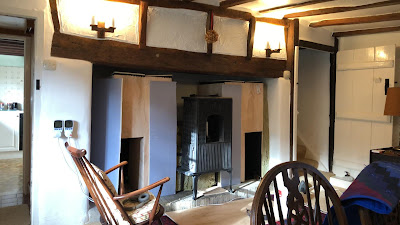Cost a sustainable development of timber
Wood is a great material (You might say I’m biased, son of a timber merchant and all that) but it can be both cheap and expensive.
The oxymoronic nature of that comes from the fact that compared to plastics wood is expensive and compared to metals it is cheap.
One of the things I’d like to explore in this post is an idea that came to me when exploring what could be done with regards to expanding land into the sea.
On land, you are, in the modern-day limited not by the cost of the development you wish to create but by the ability to get permission from the powers that be to construct that development.
The cost of raw land in the UK has not increased much faster than inflation over the years while the cost of housing has far outstripped the rate of inflation.
The discrepancy is in large part to the limitation on the ability to develop the raw land into a property.
Clearly, this is a desirable state of affairs in that we don’t want to cover the British isles with concrete blocks but equally it leads to an artificial scarcity which as a renter I want to try and bypass.
One of my thought experiments relating to bypassing this false scarcity is the idea of building out in the water off the coast. This comes with similar issues to trying to simply construct on land, in that it requires permission from the powers that be. However, unlike on land movable structures can be of arbitrary size. There is no need for them to uphold axle weight regulations.
That isn’t to say that you could start selling property on the coast without it being regulated, once you get beyond the scale of having a few friends over your coastal entity needs to be declared a vessel that is fit for people to inhabit. That comes with a large amount of regulation around the captain having the qualifications and the correct safety procedures being in place.
One pondering I had was; could you grow enough timber on the coast to increase your yield of timber and how quickly could you do that.
The system that I thought about was that of a small structure that would support a single tree and use solar power (through evaporation and condensation) to desalinate the water requirements of the tree. This along with a small amount of rain collection should (according to my intuition) be enough to support the tree.
It at least has the nice effect that the hotter the weather the more water the tree gets.
I believe there are many reasons why this plan isn’t worth doing beyond finding out if a tree could grow on its own in such a system.
One of the many reasons this wouldn’t work is that the degradation of the structure would be faster than the growth of the tree. So you would end up with less material than you started with.
Even if that was the case the resulting return would be incredibly small, albeit that would not really be a limiting factor. So long as one craft can return more than one craft the number in the pontoon would not be limited until it covered the ocean.
The problem is the base of that exponent would never stray far from 1 if it ever exceeded it.
Buying land on land and growing trees on it is just far too much cheaper with so much of a better rate of return.
I think this is often the case for things that are possible but not economical. It just so happens that investing the money in something else will result in a better total yield of what you want than trying to increase your supply of the underlying directly.
The reason behind that is often to do with economies of scale.
What I ended up trying to calculate is what the price of wood should be given some basic assumptions.
The price of land.
The time taken to grow a given tree, be it softwood or hardwood.
The yield after that period of time for that piece of land.
There are some other things to take into consideration. You will not reap all the trees you sow. They take so long to grow that many will die before they reach maturity. Either from wind, disease, illegal loggers.
The other thing that I believe is important to take into consideration, perhaps only with hardwood, is the chance of regime change over the period of time in which you are growing your crop.
There are not many countries in the world that have consistently recognised property rights over the last 100 years.
For one thing, a large portion of the world has transitioned from colonial rule to independence. A lot of those independence movements lead to the nationalisation of lands that were privately held by colonists.
Many other places which didn’t suffer under colonialists attempted to follow a communist political system, resulting in all land being nationalised.
Few places help their property rights consistent through the world wars, the nazi regime didn’t recognise private french ownership of conquered lands.
Britain might in fact be your best bet when it comes to a consistent legacy of ownership as ironic as that is given the land to which is used to be the authority under which the colony’s land was recognised as owned.
In his book “Who owns England” Guy Shrubsole explains how much of the British isles is owned by direct descendants of the key personnel who aided William the conqueror in conquering England in 1066.
For those claims to land to have stood the test of time for such a long time really is a testament to a system that perhaps values the consistent enforcement of property rights over all else.


Comments
Post a Comment